Connect With Us
Blog
Items filtered by date: September 2025
Recognizing Symptoms of Fungal Toenails
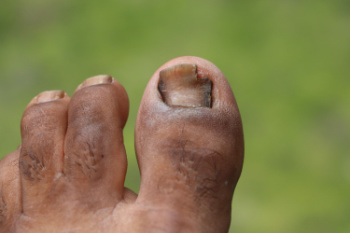
Toenail fungus, also known as onychomycosis, is a common condition that affects the appearance and health of the toenails. It often begins as a white or yellow spot under the nail and can spread deeper, causing the nail to thicken and become discolored, brittle, or distorted in shape. In some cases, the nail may separate from the nail bed and emit an unpleasant odor. It may feel uncomfortable or painful, especially when wearing shoes. Causes include exposure to warm, moist environments, such as locker rooms or public showers, wearing sweaty shoes, nail injuries, or having a weakened immune system. A podiatrist can diagnose toenail fungus through a physical exam and lab testing. Treatment options include topical or oral antifungal medications or removing the affected nail. Early treatment improves results and helps prevent the infection from spreading. It is suggested that you make an appointment with a podiatrist at the first sign of toenail changes or discomfort.
If left untreated, toenail fungus may spread to other toenails, skin, or even fingernails. If you suspect you have toenail fungus it is important to seek treatment right away. For more information about treatment, contact Nadia Sadeghi, DPM of Lincoln Park Foot and Ankle Specialists. Our doctor can provide the care you need to keep you pain-free and on your feet.
Symptoms
- Warped or oddly shaped nails
- Yellowish nails
- Loose/separated nail
- Buildup of bits and pieces of nail fragments under the nail
- Brittle, broken, thickened nail
Treatment
If self-care strategies and over-the-counter medications does not help your fungus, your podiatrist may give you a prescription drug instead. Even if you find relief from your toenail fungus symptoms, you may experience a repeat infection in the future.
Prevention
In order to prevent getting toenail fungus in the future, you should always make sure to wash your feet with soap and water. After washing, it is important to dry your feet thoroughly especially in between the toes. When trimming your toenails, be sure to trim straight across instead of in a rounded shape. It is crucial not to cover up discolored nails with nail polish because that will prevent your nail from being able to “breathe”.
In some cases, surgical procedure may be needed to remove the toenail fungus. Consult with your podiatrist about the best treatment options for your case of toenail fungus.
If you have any questions please contact our office located in Chicago, IL . We offer the newest diagnostic and treatment technologies for all your foot and ankle needs.
Who Is Affected by Sever’s Disease?
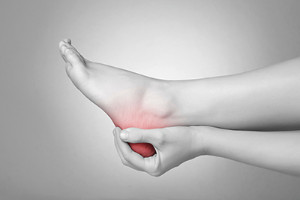 Children and young teenagers who complain of heel pain may be experiencing a condition known as Sever’s disease. This condition is defined as inflammation in the growth plate of the heel due to repetitive force. It can affect children who frequently participate in running and jumping activities, such as soccer, basketball, or gymnastics. Early recognition and treatment is most effective with Sever’s disease. When this condition is managed early on, safe return to play and sports will be more likely. Mild relief can be found when the affected foot is elevate and the activity is temporarily ceased. If your child is limping or complaining of heel pain, it is suggested that you make an appointment with a podiatrist for a diagnosis and treatment options.
Children and young teenagers who complain of heel pain may be experiencing a condition known as Sever’s disease. This condition is defined as inflammation in the growth plate of the heel due to repetitive force. It can affect children who frequently participate in running and jumping activities, such as soccer, basketball, or gymnastics. Early recognition and treatment is most effective with Sever’s disease. When this condition is managed early on, safe return to play and sports will be more likely. Mild relief can be found when the affected foot is elevate and the activity is temporarily ceased. If your child is limping or complaining of heel pain, it is suggested that you make an appointment with a podiatrist for a diagnosis and treatment options.
Sever's disease often occurs in children and teens. If your child is experiencing foot or ankle pain, see Nadia Sadeghi, DPM from Lincoln Park Foot and Ankle Specialists. Our doctor can treat your child’s foot and ankle needs.
Sever’s Disease
Sever’s disease is also known as calcaneal apophysitis, which is a medical condition that causes heel pain I none or both feet. The disease is known to affect children between the ages of 8 and 14.
Sever’s disease occurs when part of the child’s heel known as the growth plate (calcaneal epiphysis) is attached to the Achilles tendon. This area can suffer injury when the muscles and tendons of the growing foot do not keep pace with bone growth. Therefore, the constant pain which one experiences at the back of the heel will make the child unable to put any weight on the heel. The child is then forced to walk on their toes.
Symptoms
Acute pain – Pain associated with Sever’s disease is usually felt in the heel when the child engages in physical activity such as walking, jumping and or running.
Highly active – Children who are very active are among the most susceptible in experiencing Sever’s disease, because of the stress and tension placed on their feet.
If you have any questions, please feel free to contact our office located in Chicago, IL . We offer the newest diagnostic and treatment technologies for all your foot care needs.
Protecting Your Feet From Serious Diabetic Complications
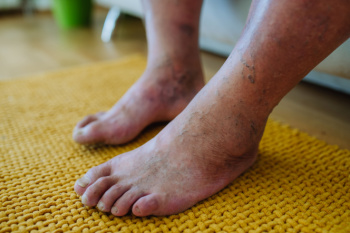
Foot problems are a serious concern for diabetic patients, often caused by poor circulation and nerve damage, known as peripheral neuropathy. Symptoms may include tingling, burning sensations, slow-healing wounds, or unnoticed injuries due to reduced feeling in the feet. Visually, the skin may appear dry, cracked, or discolored, and ulcers or infections may develop without pain. These changes can lead to severe complications, if not properly managed. A podiatrist plays a critical role in diabetic foot care by regularly monitoring foot health, checking for signs of nerve damage, infection, or poor circulation. Treatment may include wound care, toenail care, pressure relief techniques, and guidance on proper footwear. Preventive care is essential to avoid ulcers, infections, and even loss of limb. A podiatrist also provides education on daily foot inspection and hygiene. If you have diabetes, it is suggested that you schedule an appointment with a podiatrist to ensure early detection and personalized care for diabetic foot health.
Diabetic foot care is important in preventing foot ailments such as ulcers. If you are suffering from diabetes or have any other concerns about your feet, contact Nadia Sadeghi, DPM from Lincoln Park Foot and Ankle Specialists. Our doctor can provide the care you need to keep you pain-free and on your feet.
Diabetic Foot Care
Diabetes affects millions of people every year. The condition can damage blood vessels in many parts of the body, especially the feet. Because of this, taking care of your feet is essential if you have diabetes, and having a podiatrist help monitor your foot health is highly recommended.
The Importance of Caring for Your Feet
- Routinely inspect your feet for bruises or sores.
- Wear socks that fit your feet comfortably.
- Wear comfortable shoes that provide adequate support.
Patients with diabetes should have their doctor monitor their blood levels, as blood sugar levels play such a huge role in diabetic care. Monitoring these levels on a regular basis is highly advised.
It is always best to inform your healthcare professional of any concerns you may have regarding your feet, especially for diabetic patients. Early treatment and routine foot examinations are keys to maintaining proper health, especially because severe complications can arise if proper treatment is not applied.
If you have any questions, please feel free to contact our office located in Chicago, IL . We offer the newest diagnostic and treatment technologies for all your foot care needs.
Understanding Stress Fractures in Athletes
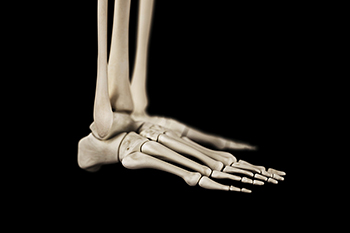
A stress fracture is a small crack in a bone that often develops from repetitive stress rather than a sudden injury. Athletes are particularly prone to stress fractures due to recurring movements, overtraining, wearing poor footwear, or sudden increases in activity. Symptoms include localized pain, swelling, and discomfort that worsens with activity. Managing stress fractures usually involves rest, activity modification, supportive footwear, and a gradual return to sports. A podiatrist can provide an accurate diagnosis through imaging, recommend treatment options, and guide rehabilitation to prevent further injury. If you are experiencing persistent foot pain or suspect a stress fracture, it is suggested that you promptly visit a podiatrist for expert care to help you heal properly and return to your activities safely.
Activities where too much pressure is put on the feet can cause stress fractures. To learn more, contact Nadia Sadeghi, DPM from Lincoln Park Foot and Ankle Specialists. Our doctor can provide the care you need to keep your pain free and on your feet.
Dealing with Stress Fractures of the Foot and Ankle
Stress fractures occur in the foot and ankle when muscles in these areas weaken from too much or too little use. The feet and ankles then lose support when walking or running from the impact of the ground. Since there is no protection, the bones receive the full impact of each step. Stress on the feet can cause cracks to form in the bones, thus creating stress fractures.
What Are Stress Fractures?
Stress fractures occur frequently in individuals whose daily activities cause great impact on the feet and ankles. Stress factors are most common among:
- Runners
- People affected with Osteoporosis
- Tennis or basketball players
- Gymnasts
- High impact workouts
Symptoms
Pain from the fractures occur in the area of the fractures and can be constant or intermittent. It will often cause sharp or dull pain with swelling and tenderness. Engaging in any kind of activity which involves high impact will aggravate pain.
If you have any questions please contact our office located in Chicago, IL . We offer the newest diagnostic and treatment technologies for all your foot and ankle needs.
Heel Pain in the Morning?
Treatment Options for Ingrown Toenails
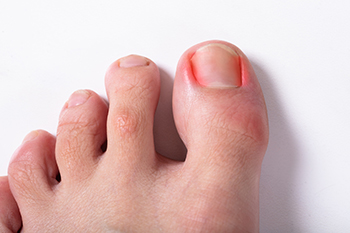
Ingrown toenails develop when the edge of the nail grows into the surrounding skin, leading to pain, redness, swelling, and sometimes infection. This condition most often affects the big toe, especially along the lateral edge. Causes include hereditary nail shape, poorly fitting shoes that compress the toes, trauma, and trimming nails too short or with rounded corners. A podiatrist can assess the severity of the ingrown toenail and provide the appropriate treatment, which may include surgery in recurring or severe cases. Conservative options involve carefully lifting and supporting the nail edge to reduce pressure on the skin. In more advanced cases, a podiatrist may recommend partial removal of the nail or removal of the nail matrix, the tissue located under the base of the nail, just beneath the cuticle and behind the nail plate, to prevent regrowth in the affected section. These approaches relieve pain, correct the ingrown edge, and lower the risk of infection or complications. If you have a problematic ingrown toenail, it is suggested that you suchedule an appointment with a podiatrist for an evaluation and appropriate treatment.
Ingrown toenails can become painful if they are not treated properly. For more information about ingrown toenails, contact Nadia Sadeghi, DPM of Lincoln Park Foot and Ankle Specialists. Our doctor can provide the care you need to keep you pain-free and on your feet.
Ingrown Toenails
Ingrown toenails occur when a toenail grows sideways into the bed of the nail, causing pain, swelling, and possibly infection.
Causes
- Bacterial infections
- Improper nail cutting such as cutting it too short or not straight across
- Trauma to the toe, such as stubbing, which causes the nail to grow back irregularly
- Ill-fitting shoes that bunch the toes too close together
- Genetic predisposition
Prevention
Because ingrown toenails are not something found outside of shoe-wearing cultures, going barefoot as often as possible will decrease the likeliness of developing ingrown toenails. Wearing proper fitting shoes and using proper cutting techniques will also help decrease your risk of developing ingrown toenails.
Treatment
Ingrown toenails are a very treatable foot condition. In minor cases, soaking the affected area in salt or antibacterial soaps will not only help with the ingrown nail itself, but also help prevent any infections from occurring. In more severe cases, surgery is an option. In either case, speaking to your podiatrist about this condition will help you get a better understanding of specific treatment options that are right for you.
If you have any questions, please feel free to contact our office located in Chicago, IL . We offer the newest diagnostic and treatment technologies for all your foot care needs.

